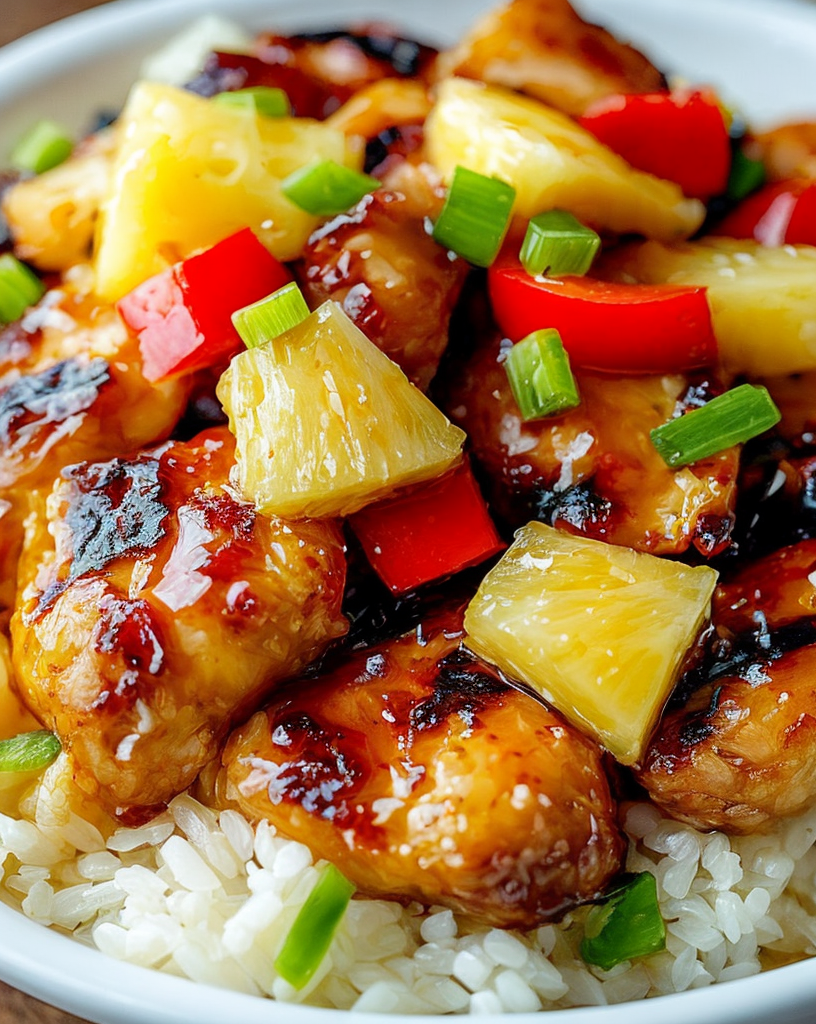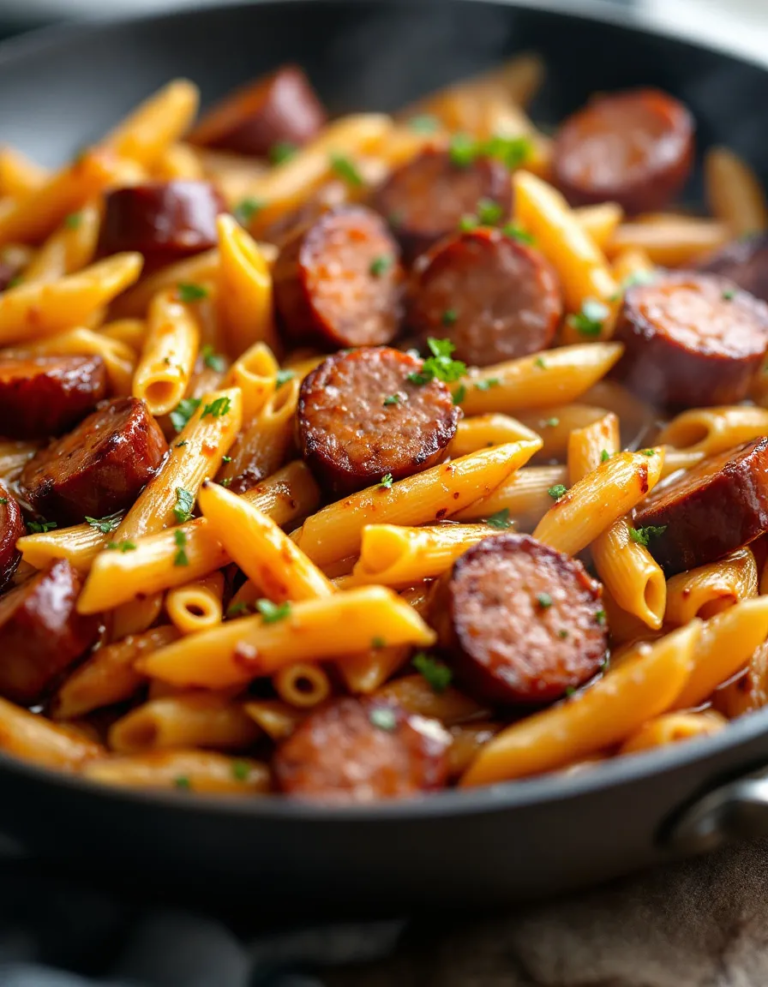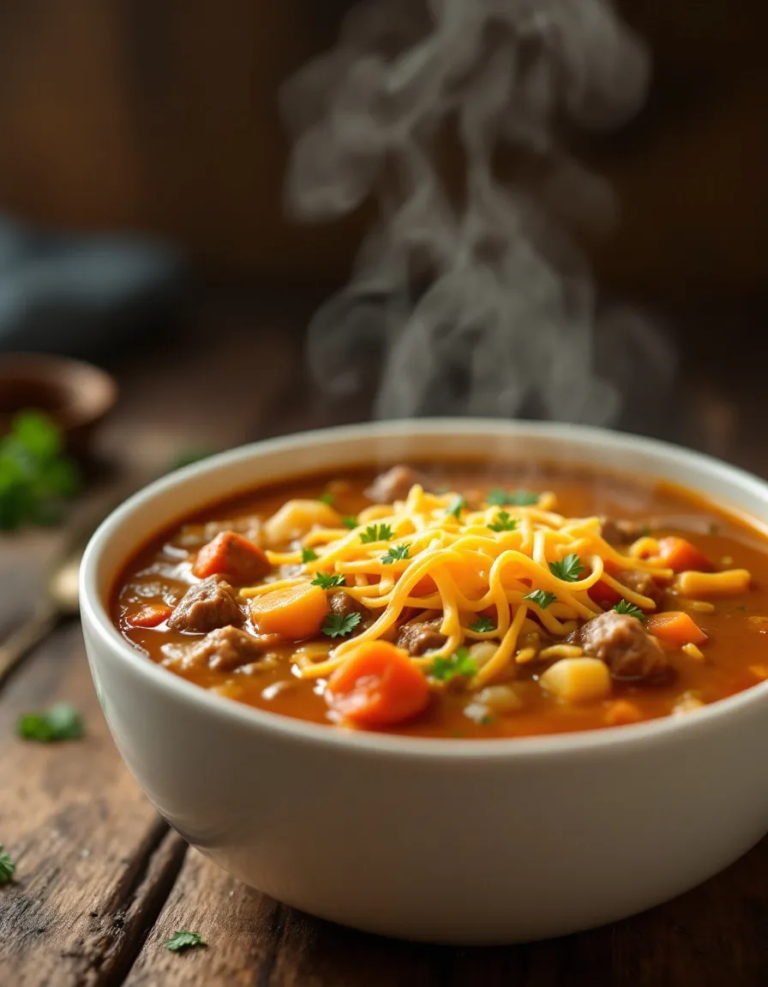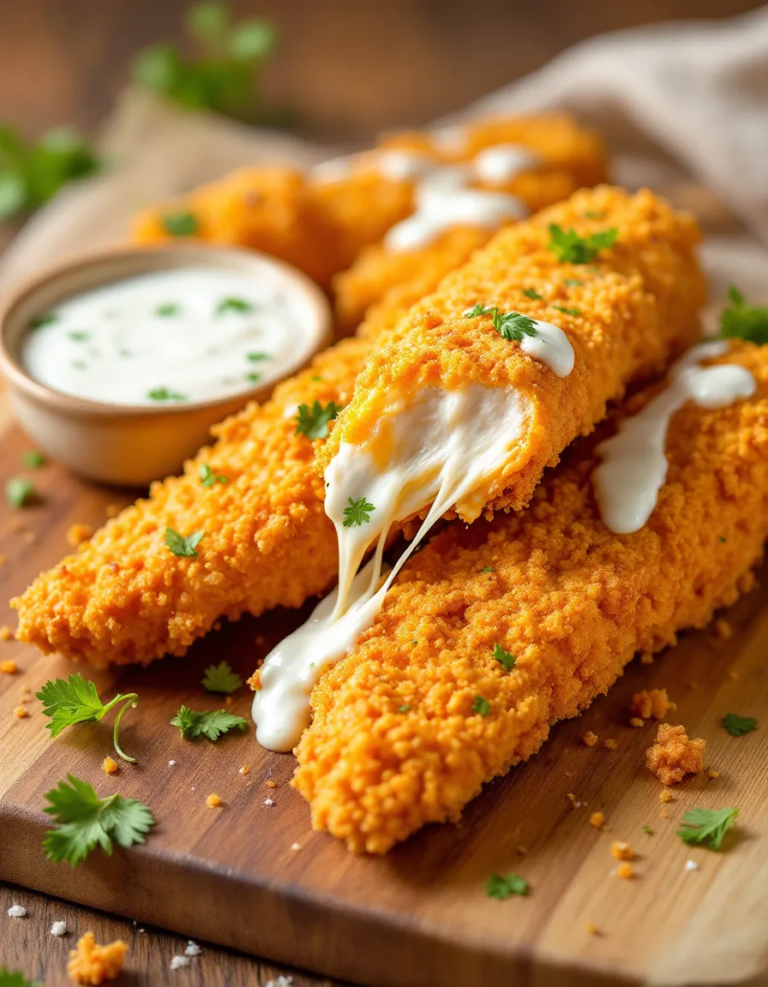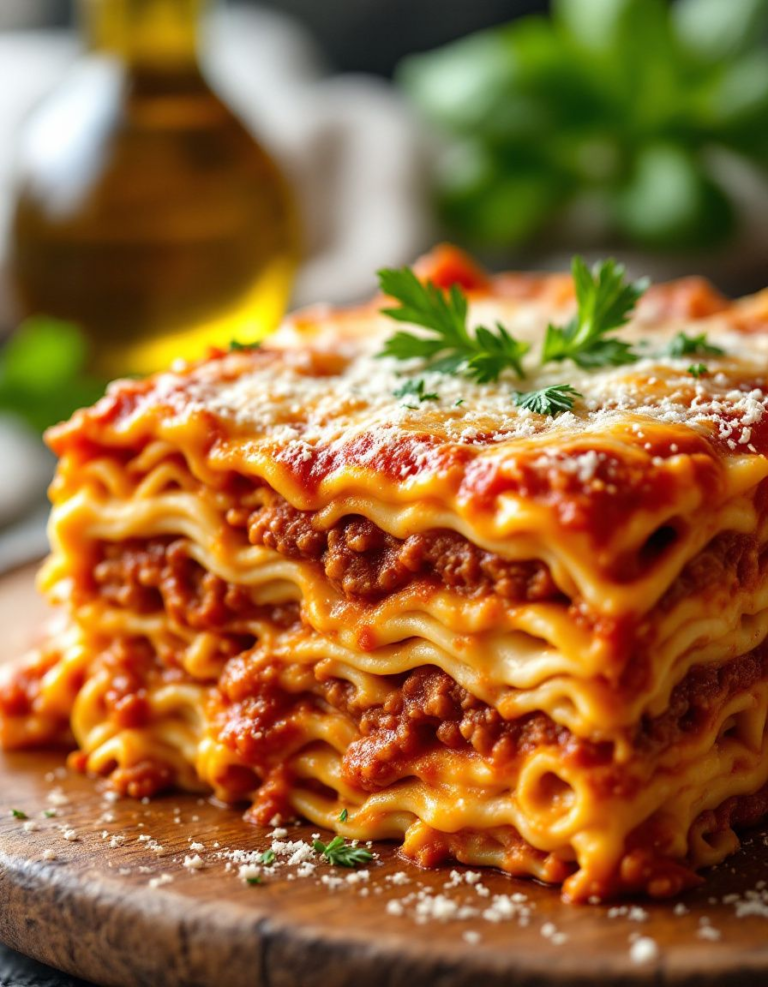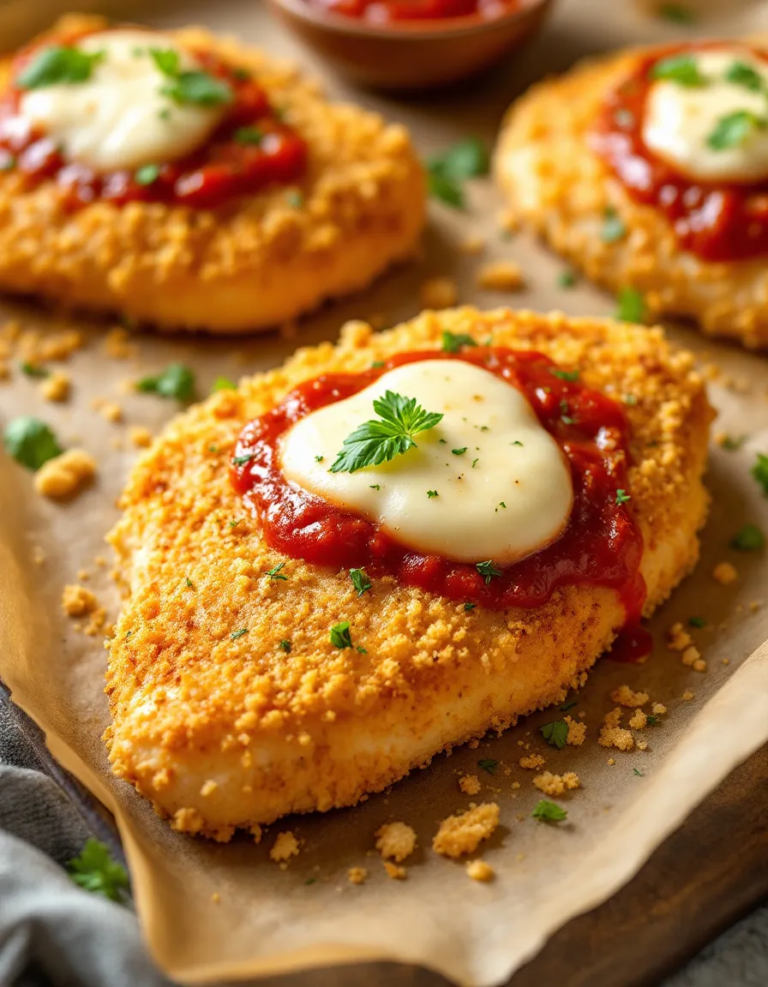Quick Hawaiian Pineapple Chicken and Rice Recipe (Ready in 30 Minutes) 🍍🍗
Hawaiian Pineapple Chicken and Rice Recipe: A Tropical Delight
Transform your weeknight dinners with this vibrant and aromatic Hawaiian Pineapple Chicken and Rice recipe. Perfectly blending juicy chicken with sweet pineapple in a savory glaze, this dish brings the flavors of the Hawaiian islands to your table. Imagine tender chicken bites combined with fluffy rice, all elevated by the rich caramelization of pineapple. The fragrant aroma will tantalize your senses long before the first taste, making this dish not only a feast for your palate but also for your eyes and nose.
The combination of sweet and savory in Hawaiian Pineapple Chicken and Rice is a delightful journey through taste and texture. With a slight citrus note from the pineapple, each bite feels refreshing. The textures contrast beautifully as juicy chicken merges with crispy bell peppers and soft rice, delivering a satisfying culinary experience. Presenting itself with vibrant yellows and greens, this dish is as visually stunning as it is delicious.
Quick Recipe Highlights
- Flavor Profile: Enjoy a harmonious blend of sweet pineapple and savory chicken with a subtle hint of ginger and soy sauce.
- Texture: A delightful mix of tender chicken chunks and soft rice, punctuated by the crispiness of fresh peppers.
- Aroma: Invigorating with hints of tropical fruit and Asian-inspired spices.
- Visual Appeal: Bright, colorful elements from fresh pineapple and vegetables brighten the plate.
- Skill Level Needed: Basic cooking skills required; perfect for beginners wanting to experiment with flavors.
- Special Equipment: A non-stick pan or wok for optimal cooking results.
Recipe Overview
- Difficulty Level: This easy-to-make dish primarily involves simple chopping and stirring, making it accessible even to a beginner chef.
- Category: This is a main course perfect for lunch or dinner.
- Cuisine: While rooted in Hawaiian flavors, it embodies influences from Asian cuisine, making it diverse and fulfilling.
- Cost: Reasonably priced, with common ingredients readily available in most supermarkets.
- Season: Ideal in summer when pineapples are at their peak, but enjoyable year-round.
- Occasion: Perfect for family dinners or casual gatherings with friends, adding a tropical twist to any meal.
Why You’ll Love This Recipe
The Hawaiian Pineapple Chicken and Rice captivates with a fabulous interplay of tastes and textures, inviting you into a world of balance between sweet and savory. It delivers a uniquely tropical aroma emanating from the fresh pineapple which serves as a sensory prelude to the delightful taste experience. Each bite offers a marriage of textures, where the softness of the rice complements the tender chicken cubes, creating an addictive dish that’s sure to be on repeat in your kitchen.
Besides its excellent taste, this dish is highly convenient and quick to prepare, with minimal cutting and cooking required. This allows it to fit seamlessly into a busy lifestyle, offering a homemade dinner option that is both impressive and unfussy. Furthermore, the recipe uses ingredients that can frequently be found in your pantry or fridge, making spontaneous dinner creations worry-free and delightful.
Nutritionally, this dish is a powerhouse, packed with rich proteins from the chicken and the natural boost of vitamins and minerals from the pineapple and peppers. It’s a fantastic way to infuse your diet with fresh ingredients while keeping meals wholesome and well-rounded. Versatile on its own, it can evolve to meet any dietary needs with slight modifications.
Hosting dinners with Hawaiian Pineapple Chicken and Rice not only showcases your culinary flair but also provides a crowd-pleaser that’ll leave your guests discussing the aromatic flavors for days. It’s an effortless way to incorporate a touch of the exotic into your mealtime gatherings, highlighting the communal essence of shared meals and good conversations.
Economically, this recipe is efficient, making use of seasonal pineapples, which offer the juiciest and most cost-effective options when in season. It’s very adaptable for varying budgets without compromising on quality. This dish invites creativity, allowing you to adapt it to your personal taste and budgetary constraints.
Historical Background and Cultural Significance
The roots of Hawaiian cuisine run deep with a fusion of Polynesian and Asian influences, perfectly captured in this Pineapple Chicken and Rice recipe. The adaptation of pineapples, an iconic symbol of Hawaiian agriculture introduced in the early 19th century, into deeply savory dishes speaks to the island’s remarkable ability to blend local produce with diverse culinary traditions brought by immigrants from around the world.
Hawaiian Pineapple Chicken’s cultural importance reflects the spirit of ‘Aloha,’ a community-central ethos that stands as a backbone of island living. Food, often the heart of gatherings, represents a celebration of nature’s bounty, where meals like these island classics are lovingly shared amongst family and friends, echoing Hawaii’s cultural hospitality.
The recipe has evolved through generations, progressively integrating modern culinary techniques while preserving its fundamental flavors and appeal. The simplicity and versatility of the original dish have led to countless adaptations, infusing personal elements based on availability and culinary preferences, showing the dynamic and fluid nature of cultural gastronomy.
Regionally, variations abound across Hawaii’s islands, each adding unique local ingredients or cooking styles, reflecting the diverse micro-cultures within the archipelago. These interpretations contribute to the dish’s rich tapestry, connecting tradition and innovation.
Ingredient Deep Dive
The star of this recipe, the pineapple, brings a vibrant burst of sweetness that pairs wonderfully with savory elements. Originally cultivated in South America and introduced to Hawaii by the Spanish explorers, it quickly became a staple in the region’s agriculture. Packed with vitamin C and antioxidants, pineapples are not only flavorful but also provide a healthful boost. When selecting a pineapple, look for ones with a sweet aroma and a slight give when pressed. Store them at room temperature for ripening and refrigerate once cut for longevity.
Chicken, often utilized in myriad Hawaiian dishes, serves as a lean protein that complements the dish remarkably well. It brings a mild flavor that absorbs the marinade beautifully, enhancing each bite with the sweet and savory undertones of the sauce. Choose boneless, skinless chicken breasts for optimal cooking, keeping the fat content in check and ensuring quicker preparation. Chicken should be stored in the refrigerator and used within a few days to maintain its freshness or frozen for longer preservation.
Common Mistakes to Avoid
- Overcooking the chicken can lead to dryness. Ensure you cook it only until it’s just done for optimal juiciness.
- Not properly caramelizing the pineapple might result in a lack of depth in flavor. Allow it to brown slightly for richer taste.
- Adding too much soy sauce can overpower the dish. Start with the recommended amount and adjust according to taste.
- Using overripe or underripe pineapples could alter the intended sweetness. Choose those that are just ripe for the best flavor.
- Skipping the resting step before serving can affect the rice’s absorption of flavors. Allow a few minutes of resting for optimal taste.
- Under-seasoning the dish might result from not considering the natural saltiness of soy sauce. Taste and season accordingly.
- Not prepping all ingredients beforehand can result in disruptions during cooking. Have your mise en place ready for a smooth process.
- Choosing too coarse a grain of rice could alter the texture. Opt for medium-grain rice for best results.
Essential Techniques
Caramelizing pineapple: This step is crucial to develop a depth of flavor, where browning brings out the natural sugars and intensifies sweetness. Mastery comes from patience—allow the pineapple pieces to sit undisturbed for a minute or two in the pan before turning them. Watch for a deep golden hue as your key visual cue.
Balancing flavors: Achieving the perfect sweet-sour-salt balance is essential in this dish. Experience with small adjustments; a splash of lemon can elevate flavors, whereas additional soy sauce will enhance the umami. Trust your palate and taste as you go to ensure harmony.
Cooking rice perfectly: Ensuring the rice remains fluffy without sticking requires rinsing it well to remove excess starch. Use a tight-fitting lid and let the rice rest after cooking off heat, allowing the grains to firm up and absorb the flavors.
Pro Tips for Perfect Hawaiian Pineapple Chicken and Rice
Consider marinating the chicken in a bit of pineapple juice, soy sauce, and ginger prior to cooking to infuse deeper flavors. Let the marinating process go between 30 minutes to an hour.
Use a mixture of oils, such as a neutral one combined with a bit of sesame oil, to introduce deeper flavors when sautéing the chicken and vegetables.
Opt for fresh pineapple rather than canned for a juicer texture and vibrant taste. If using canned, ensure it’s pure pineapple in juice, not syrup.
Allowing the sauce to reduce slightly before adding rice will help concentrate flavors, thus enriching the whole dish.
Try incorporating a touch of chili flakes for those who enjoy a hint of spice, adding an exciting kick without overwhelming the dish’s natural sweetness.
When plating, garnish with freshly chopped cilantro or green onions for added freshness and visual appeal.
Maintain even cooking heat throughout to ensure ideal texture and maximum flavor extraction from all ingredients.
Variations and Adaptations
Regional variations of this dish often include local fruits such as mango or papaya, enhancing the tropical flair and proving delicious alternatives to pineapple. In cooler seasons, explore the comfort of root vegetables, like carrots and sweet potatoes, to lend a hearty aspect to the dish.
Dietary modifications are easily achievable by substituting white rice with cauliflower rice for a low-carb version or using coconut aminos in place of soy sauce for gluten-free requirements. Plant-based eaters can swap the chicken with firm tofu baked to give it a chewy texture akin to chicken breast.
Changing the flavor profile is as simple as introducing new spices such as curry powder or experimenting with herb-infused oils. Diverse textures can be played with; consider adding crushed nuts or sesame seeds for a crunch factor that complements the tender elements.
For presentation diversity, serve the dish in hollowed-out pineapples for a tropical touch or alongside a quinoa salad for an elevated dining experience. Adjusting the serving size for small bites is possible by skewering chicken-pineapple combinations for cocktail-style servings.
Serving and Presentation Guide
When serving, arrange rice as a base with well-spaced chicken-pineapple pieces, allowing each ingredient to shine through. For garnishing, a simple sprinkle of toasted sesame seeds or fresh cilantro elevates the dish’s aesthetics and adds complementary textures.
Traditional accompaniments include a side of jasmine rice and a refreshing coleslaw. For a modern interpretation, accompany with a crisp cucumber salad to balance the dish’s complex flavors and brightening the taste with fresh, raw elements.
Temperature considerations suggest serving the chicken hot with warm rice, encouraging the melding of flavors while keeping the meal invitingly aromatic. Regarding portion control, consider serving it family style to encourage sharing, maintaining a communal atmosphere.
Wine and Beverage Pairing
A chilled Sauvignon Blanc, with its citrus undertones and crisp apple notes, pairs wonderfully with the sweet and savory elements of this dish, enhancing the tropical vibe while counterbalancing the chicken’s hearty nature.
Consider non-alcoholic alternatives such as a sparkling pineapple juice or a refreshing iced green tea, both complementing the dish’s brightness. Coffee is not typically recommended, but a piping hot jasmine tea brings a delightful aromatic finish.
Ensure cold beverages contrast pleasantly with the warm dish, further emphasizing the tropical escape sensation. Serving the wine or juice in chilled glasses aids in temperature consistency, enhancing the dining experience with attention to detail.
Storage and Shelf Life
Store leftovers in airtight containers to prevent moisture loss and keep flavors intact. Ideally, refrigerate within two hours of cooking to extend freshness up to three days. If freezing, divide the dish into single portions for easy defrosting, maintaining texture and flavor.
Signs of spoilage include a change in smell or texture. It’s important to reheat politely, adding some water or broth if necessary to prevent drying out the chicken and rice, reheating it thoroughly to maintain health and safety.
For best results, use the stove or oven to reheat, preserving the rice’s moisture and the dish’s overall flavor integrity. Avoid repeated reheating, as it can cause ingredient degradation and diminish the meal’s delightful taste.
Make Ahead Strategies
Start by marinating chicken and chopping vegetables a day ahead, storing them separately in airtight containers to maintain freshness. This preparation step allows cooking day to focus solely on assembling and presenting, streamlining the dinner process.
During storage between steps, keep elements well-labeled to encourage organization; this aids efficiency during the final cooking phase. Evaluate the quality impact; marinated chicken typically gains enhanced flavors without negatively affecting texture.
Assembly tips suggest layering ingredients strategically based on cooking time, easing the transition between stovetop and table. Reheating guidelines recommend a gentle approach to maintain freshness—using covered methods like foil-wrapped oven reheating.
Just before serving, consider fresh element additions like a sprinkle of herbs or a squeeze of lime—invigorating the dish and restoring any lost brightness over time.
Scaling Instructions
Halving the recipe requires careful attention to ingredient ratios, particularly in marinades and sauces, ensuring they remain balanced without compromising flavor. Doubling or tripling amounts works best with careful planning and proportion adherence.
Equipment adjustments may include larger pans to accommodate expanded food quantities, avoiding overcrowding and ensuring even cooking. As timing modifications are likely needed, ensure a stopwatch or timer is handy for accuracy during the increased process.
Storage considerations suggest dividing the dish into varying serving sizes before freezing, providing flexibility based on future mealtime needs and minimizing food waste. This approach maximally extends freshness and offers quick solutions to dinner time quandaries.
Nutritional Deep Dive
Hawaiian Pineapple Chicken and Rice offers a balanced macronutrient profile, with adequate protein from chicken and carbohydrates from rice to ensure energy sustenance. The meal’s micronutrients from fresh pineapple and vegetables offer vitamins like C and K.
Health benefits include supporting immune function due to pineapple’s bromelain, enhancing digestion, and promoting vitamin absorption. Dietary considerations stress moderation of soy sauce, focusing on low-sodium alternatives for heart health optimization.
This dish allows flexibility in portion control, offering manageable servings with a mindful eye on caloric intake. Weight management tips suggest filling half the serving plate with vegetables and the rest split between chicken and rice for an ideal nutritional mix.
Dietary Adaptations
A gluten-free alternative replaces soy sauce with gluten-free tamari or coconut aminos while ensuring pineapple and other ingredients remain free of gluten traces. Dairy-free adaptation is inherent, requiring no changes unless tips include dairy-based options.
Vegan conversion is simple, using marinated tofu and vegetable broth instead of chicken and stock. Low-carb diets can replace rice with cauliflower rice to reduce carbohydrate content, maintaining a light, nutritious meal while adhering to dietary limits.
For keto enthusiasts, focus on increasing the proportion of fats via coconut oil or avocado, keeping macros balanced with dietary needs. Paleo preferences are satisfied with fresh, unprocessed ingredients and suitable oil choices ensuring minimal deviations.
Low-FODMAP changes suggest careful measurement of onion and garlic for those sensitive to these ingredients, maintaining gastrointestinal comfort. Other specific diets can also be catered for with mindfulness of ingredient substitutions based on dietary preferences.
The Recipe
Hawaiian Pineapple Chicken and Rice
Serves: 4
Prep Time: 15 mins
Cook Time: 30 mins
Total Time: 45 mins
Kitchen Equipment Needed
- Non-stick pan or wok
- Chef’s knife
- Cutting board
- Measuring cups and spoons
- Mixing bowl
Ingredients
- 2 cups fresh pineapple chunks
- 1 lb boneless, skinless chicken breasts, cubed
- 1 cup jasmine rice
- 2 tbsp soy sauce
- 1 tbsp sesame oil
- 2 cloves garlic, minced
- 1 inch fresh ginger, grated
- 1 red bell pepper, chopped
- Salt and pepper to taste
- Green onions, chopped, for garnish
Directions
- Cook rice according to package instructions and set aside.
- Heat a non-stick pan over medium heat. Add sesame oil.
- Season chicken cubes with salt and pepper, then add to the pan. Cook until slightly browned.
- Add the garlic and ginger, cooking for another minute until fragrant.
- Stir in the chopped bell peppers and pineapple chunks, allowing them to caramelize gently.
- Pour in soy sauce, incorporating all ingredients thoroughly.
- Combine cooked rice with the pineapple chicken, mixing well to ensure flavors meld together.
- Garnish with chopped green onions and serve hot.
Recipe Notes
- Substitute soy sauce with tamari or coconut aminos for a gluten-free option.
- For extra flavor, marinate the chicken in pineapple juice for up to an hour before cooking.
- Adjust seasonings to your taste, based on the sweetness and saltiness of your soy sauce.
Troubleshooting Guide
Texture Issues
If your chicken turns out dry, consider adjusting the cooking temperature next time to low-medium and ensure timely removal from heat once cooked. Also, consider brining the chicken beforehand for added moisture retention.
Flavor Balance
For an overly sweet dish, add a touch more soy sauce or a splash of lime juice to introduce acidity and restore balance. Conversely, a bland dish may benefit from an additional pinch of salt or sugar to enhance the natural flavors.
Temperature Problems
Cold zones in your stove might affect cooking. Test and adjust settings or reposition the pan to ensure even heat distribution across its surface, securing optimal flavors throughout the cooking process.
Equipment Challenges
Lack of appropriate equipment such as a wok can be resolved by using any large, deep skillet ensuring heat is evenly distributed; consider adjusting ingredient quantities to avoid overcrowding.
Ingredient Substitutions
To replace ingredients like bell peppers, consider alternatives such as zucchini or broccoli, maintaining similar cooking times for optimal texture results. Be mindful of seasoning adjustments based on substitutions made.
Timing Concerns
If rice becomes mushy, next time reduce water slightly or decrease cooking time. Flavor profiles from the rice may enhance if allowed to rest briefly before integrating with the chicken mixture.
Recipe Success Stories
Our community members have shared exciting variations where using coconut milk in lieu of soy sauce delivers a creamy, indulgent version elevated by adding toasted coconut flakes. Such creativity highlights the recipe’s adaptability to different tastes.
Many reported adaptation stories highlight successfully integrating other proteins like shrimp, inspired by traditional Polynesian seafood dishes, maintaining the tropical flair while diversifying meal offerings.
Reader suggestions include incorporating this dish into meal prep routines, emphasizing its reliability for weekly lunches—proving highly practical and adaptable with varying side dish pairings depending on availability.
Photography tips await those eager to capture their dish’s vibrancy: arrange ingredients neatly on an island-themed plate with a light source from behind to illuminate each colorful component, encouraging bright, enticing captures.
Frequently Asked Questions
Can I use canned pineapple instead of fresh?
Yes, canned pineapple can be used, but ensure it’s packed in juice rather than syrup to maintain an appropriate sweetness and consistency in the dish.
What can I substitute for chicken?
Firm tofu or tempeh are excellent plant-based alternatives, providing a similar texture and absorbing the flavors beautifully when marinated properly.
Can I make the dish ahead of time?
Yes, prepare components separately and combine them shortly before serving. Store in airtight containers in the refrigerator and assemble when ready to eat.
Is it possible to freeze this recipe?
This dish freezes well; allow to cool before portioning into freezer-safe containers. Thaw in the refrigerator overnight before reheating and serving.
How can I add a spicy kick?
Additions like chili flakes or a few slices of fresh red chili will introduce heat that complements the sweet and savory blends in the dish.
What’s the best rice to use?
Jasmine rice is ideal due to its aroma and stickier consistency, perfect for absorbing the dish’s delicious flavors, although basmati or sushi rice also work well.
How do I ensure my chicken remains juicy?
Minding cooking temperature and internal checks is crucial. Remove chicken from heat once it reaches the desired doneness and allow it to rest briefly.
Can this recipe accommodate low-sodium diets?
Yes, opt for low-sodium soy sauce or eliminate it altogether, enhancing flavors with garlic, herbs, or a splash of vinegar instead, maintaining taste without excess salt.
Can I use brown rice instead?
Absolutely! Brown rice will add additional fiber and nutrients. Just adjust cooking times accordingly, as it typically takes longer than white rice.
How can I make this dish more budget-friendly?
Purchase ingredients in bulk or focus on seasonal deals, ensuring economical options without compromising nutrition, especially when purchasing proteins and fresh produce.
Will the dish taste good without soy sauce?
Yes, substitute with coconut aminos or a savory broth, balancing flavors with additional herbs and spices to offset the umami flavor typically provided by soy.
Additional Resources
Explore related recipes like “Tropical Teriyaki Bowls” or “Island-Style Grilled Chicken” that emphasize Hawaiian cuisine’s fresh and bold flavors. Delve into technique guides on “Mastering Stir-Frying” or “Caramelization Essentials” for fundamental culinary knowledge enrichment.
Ingredient information focuses on “Selecting Pineapples” and “Protein Preparation” for confidence in purchasing quality ingredients. Consider equipment recommendations such as “Best Skillets for Stir-Frying” to optimize cooking conditions and results.
Seasonal variations and updates draw inspiration from the produce market, allowing new introductions to classic recipes, ensuring meals reflect both traditional flavors and current culinary trends, inviting future experimentation.
Join the Conversation
Share your dish on social media platforms using our hashtag as you adapt the Hawaiian Pineapple Chicken and Rice. Photography tips help you present stunning images; use natural lighting sources and arrange plates with complementary props to enhance visual appeal.
Leave recipe reviews sharing your experiences, enabling others to benefit from your culinary insights and adaptations. Engage with our community by commenting on techniques you’ve mastered or proposed modifications, fostering a collaborative environment filled with shared culinary love.

